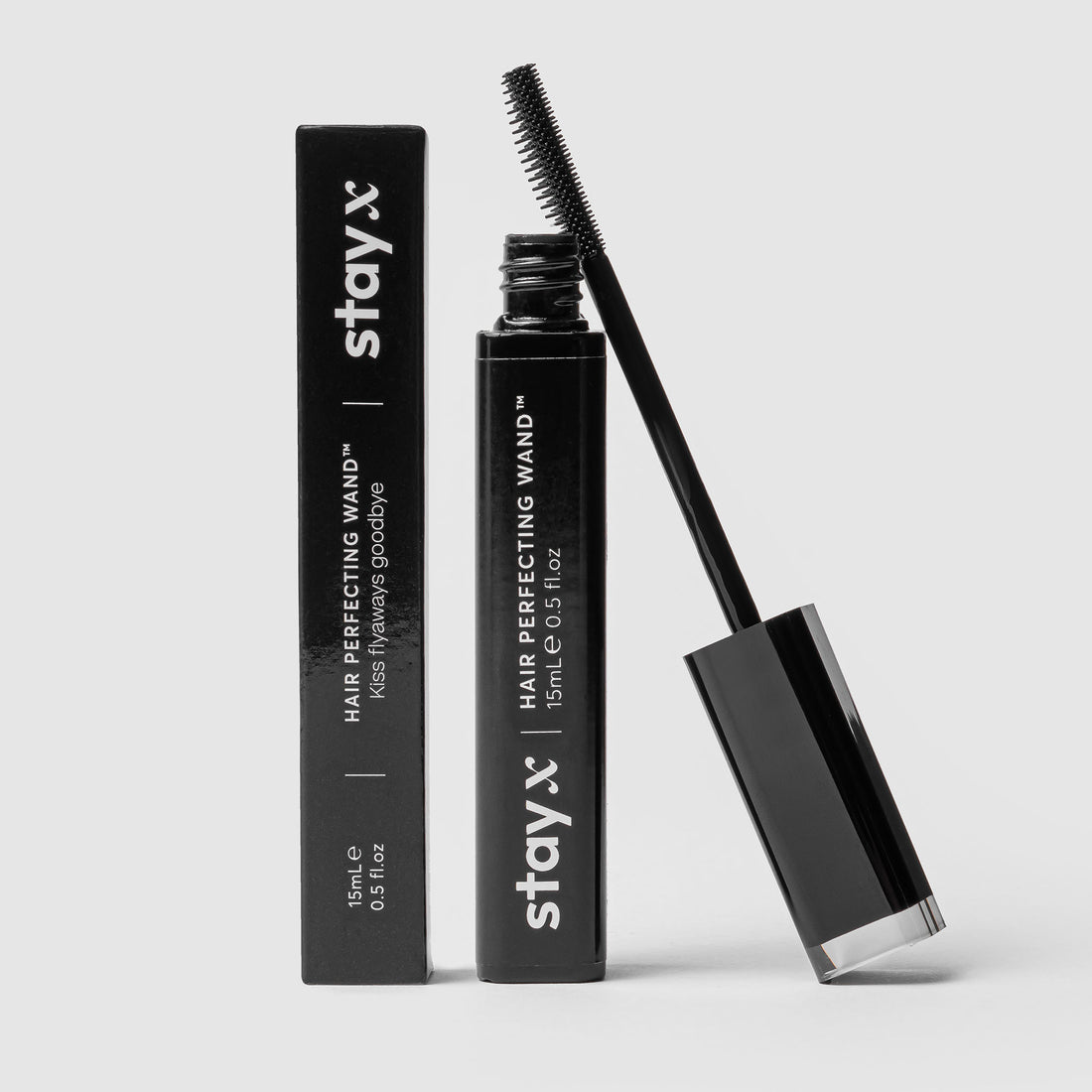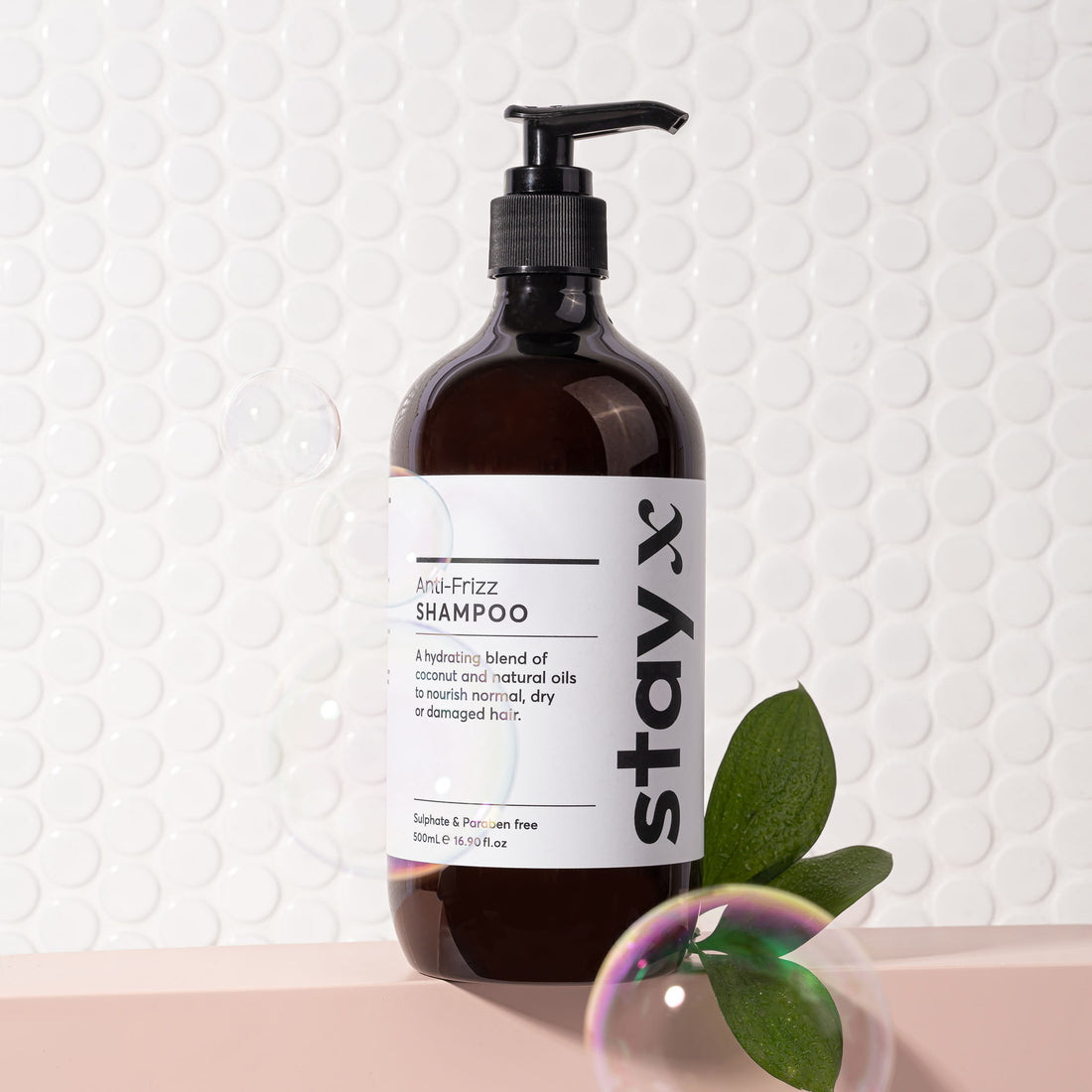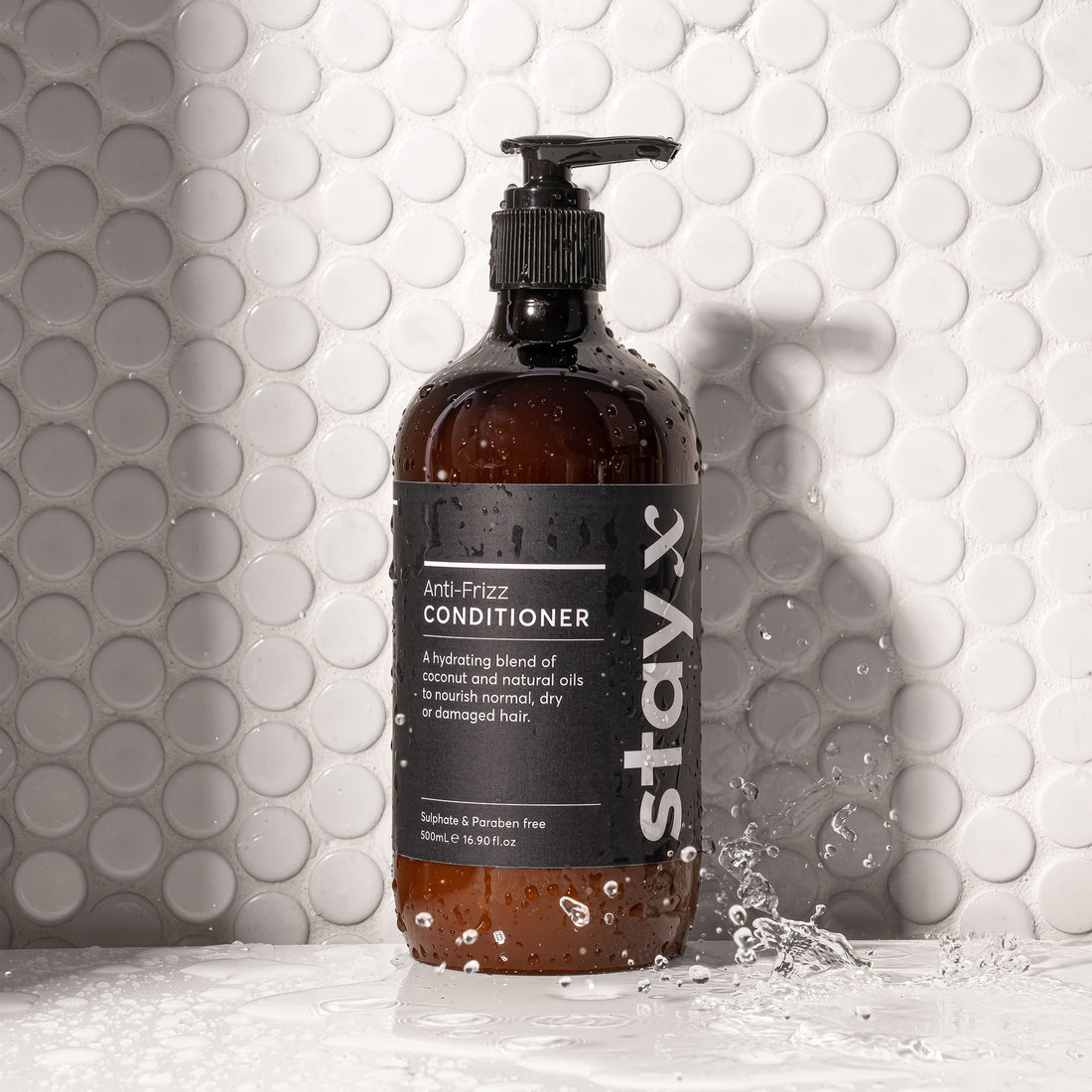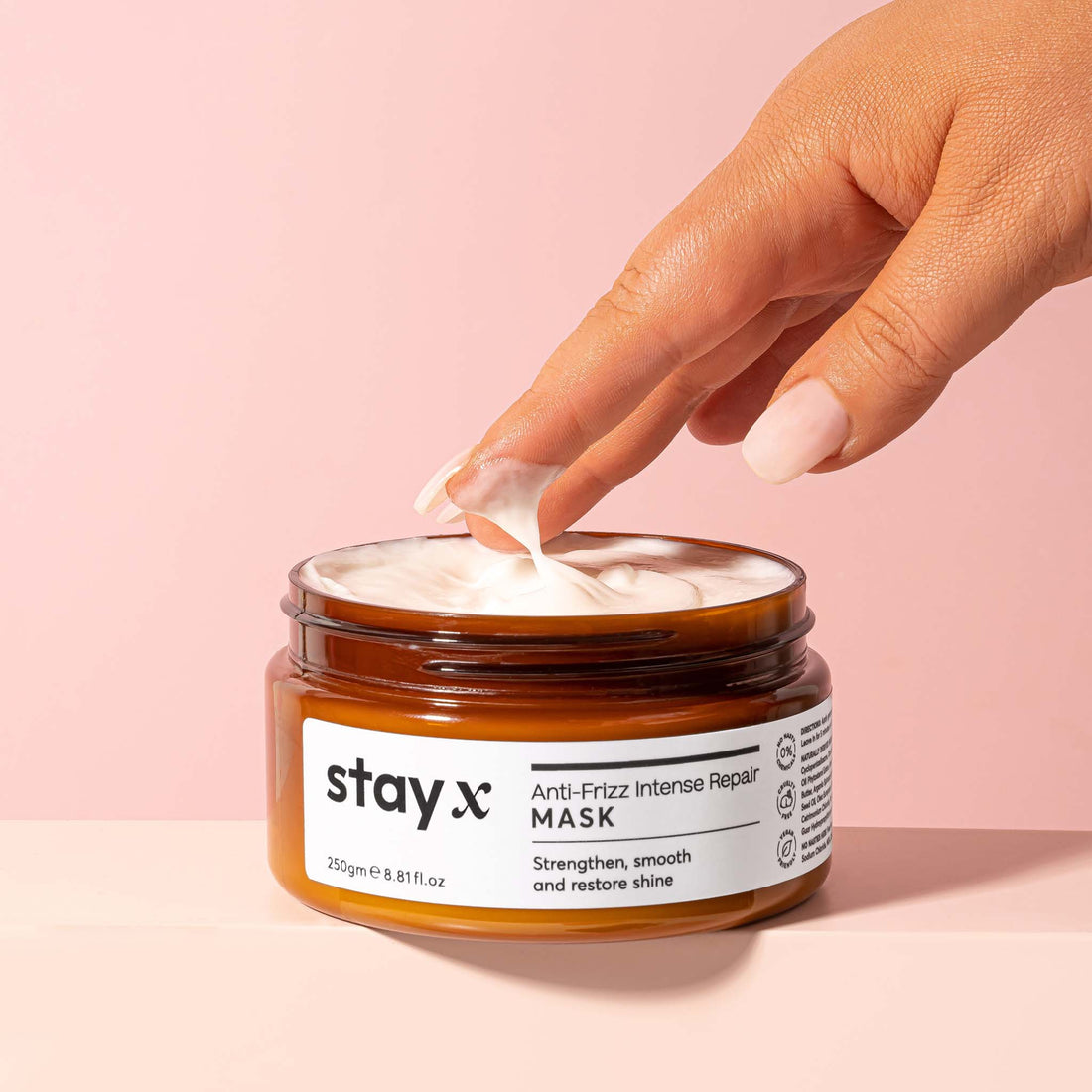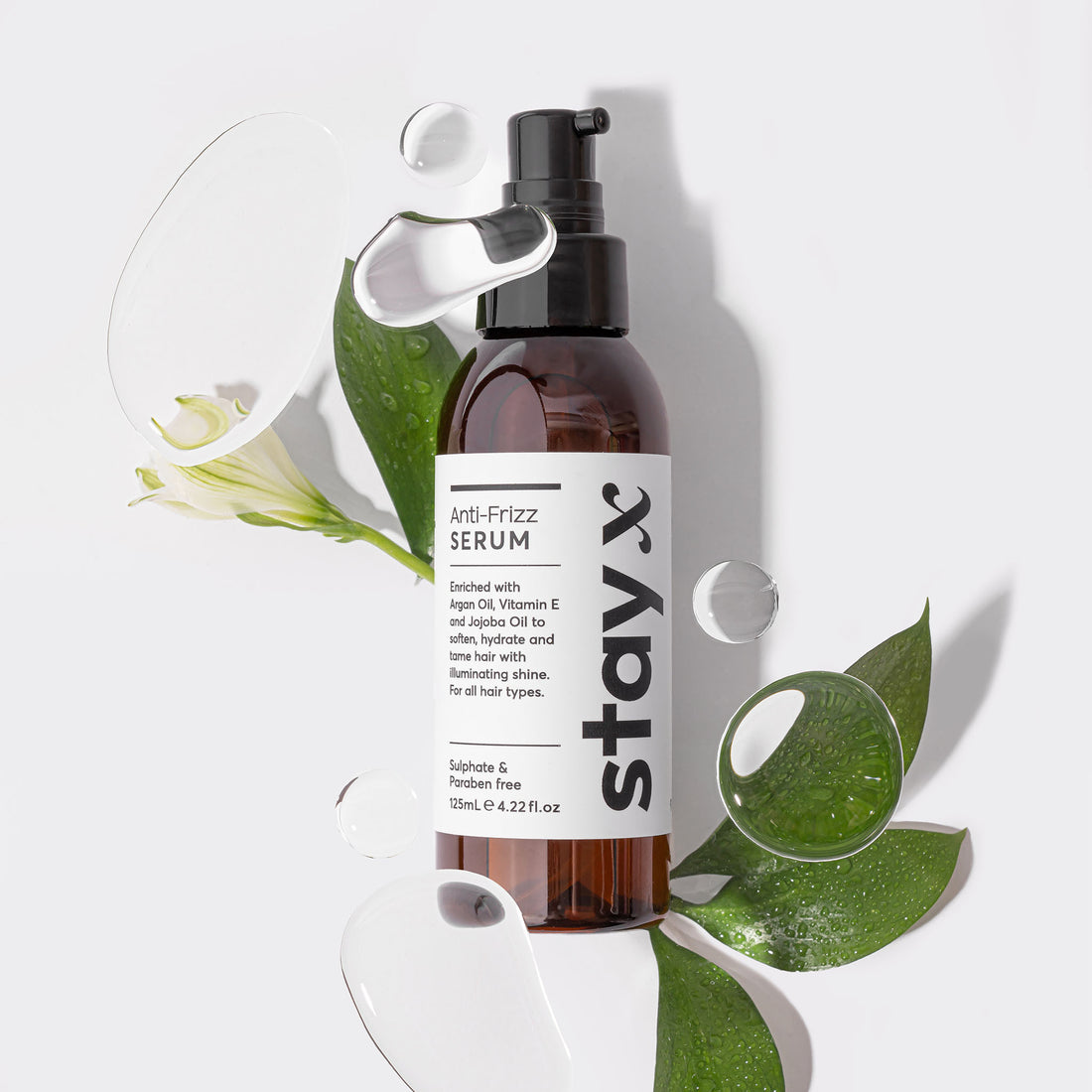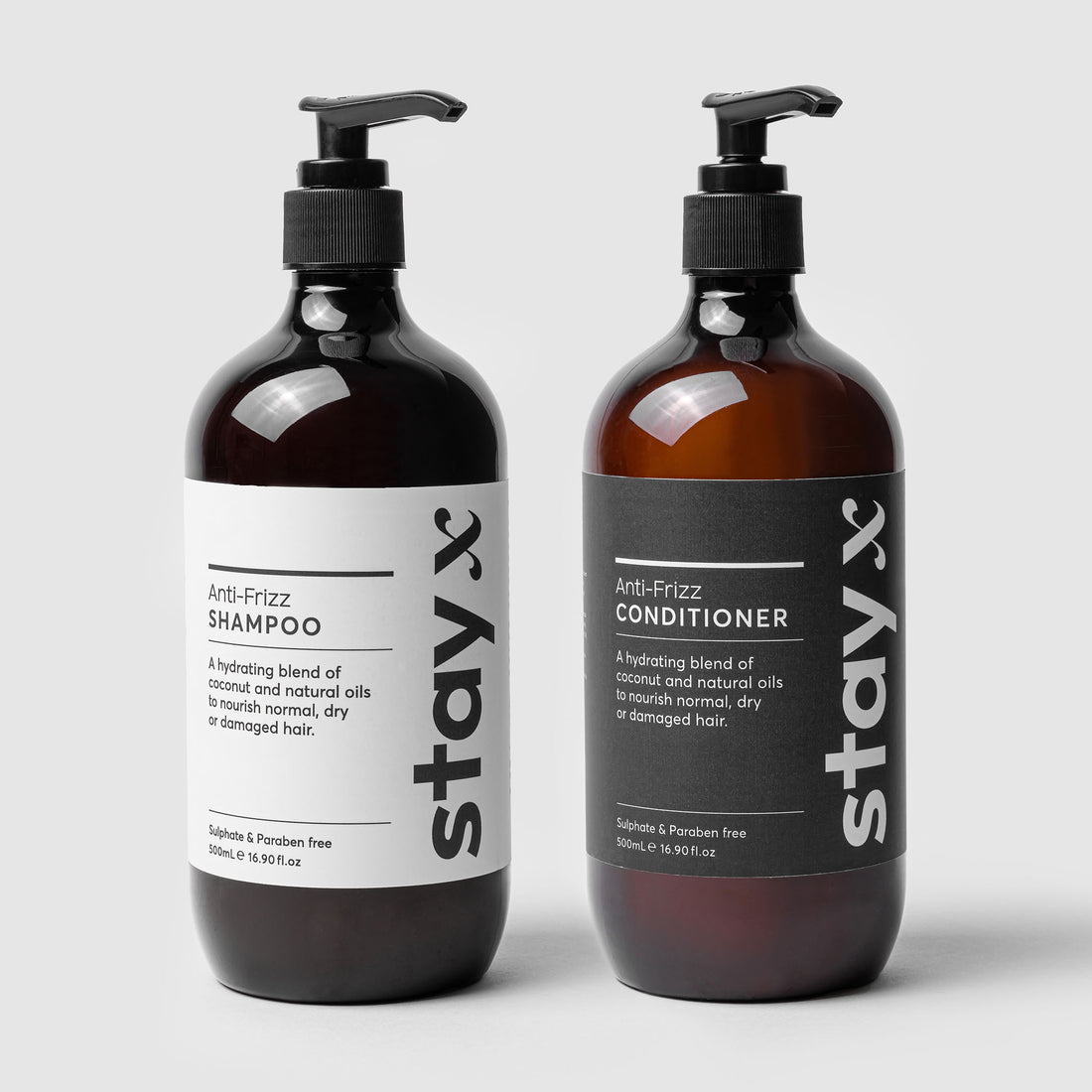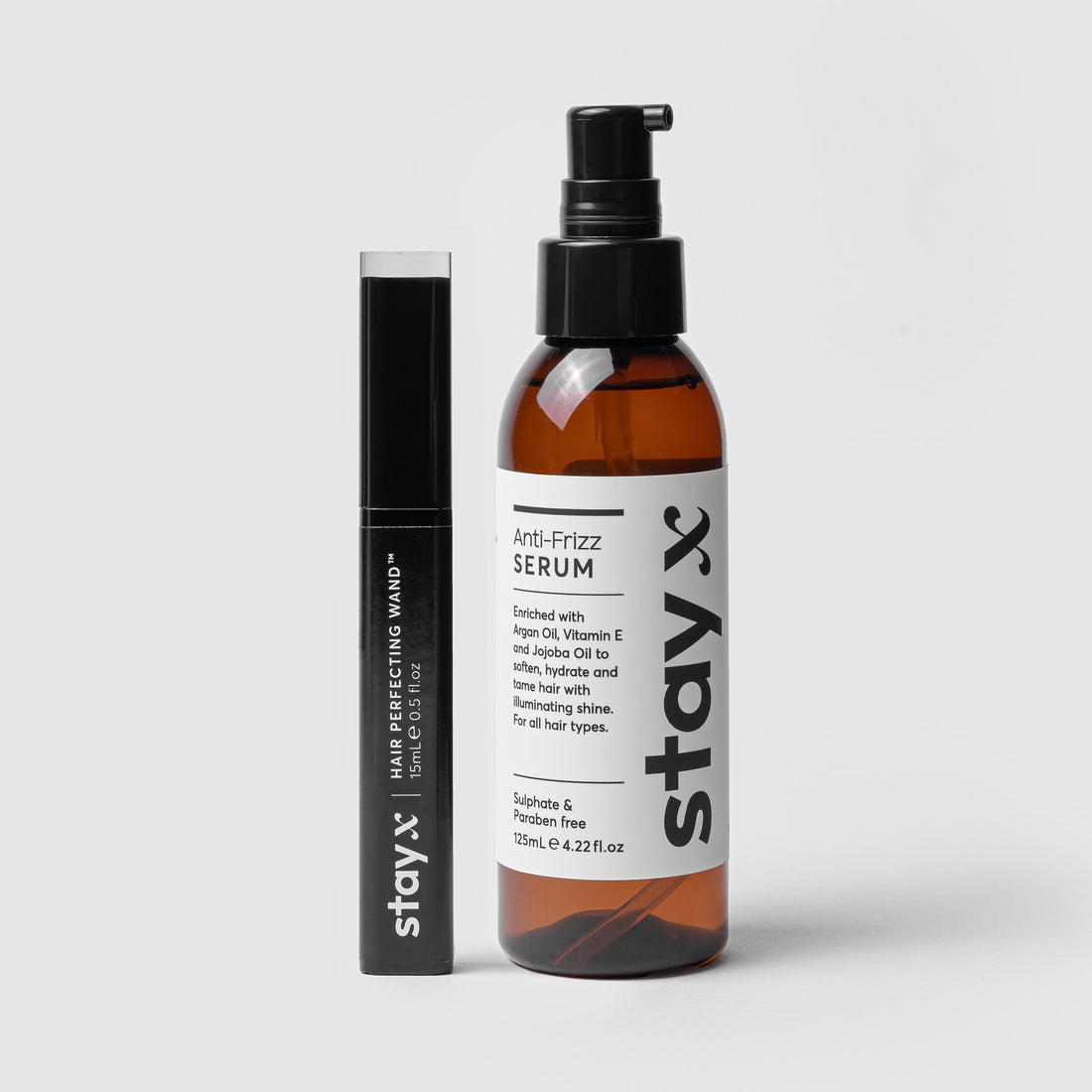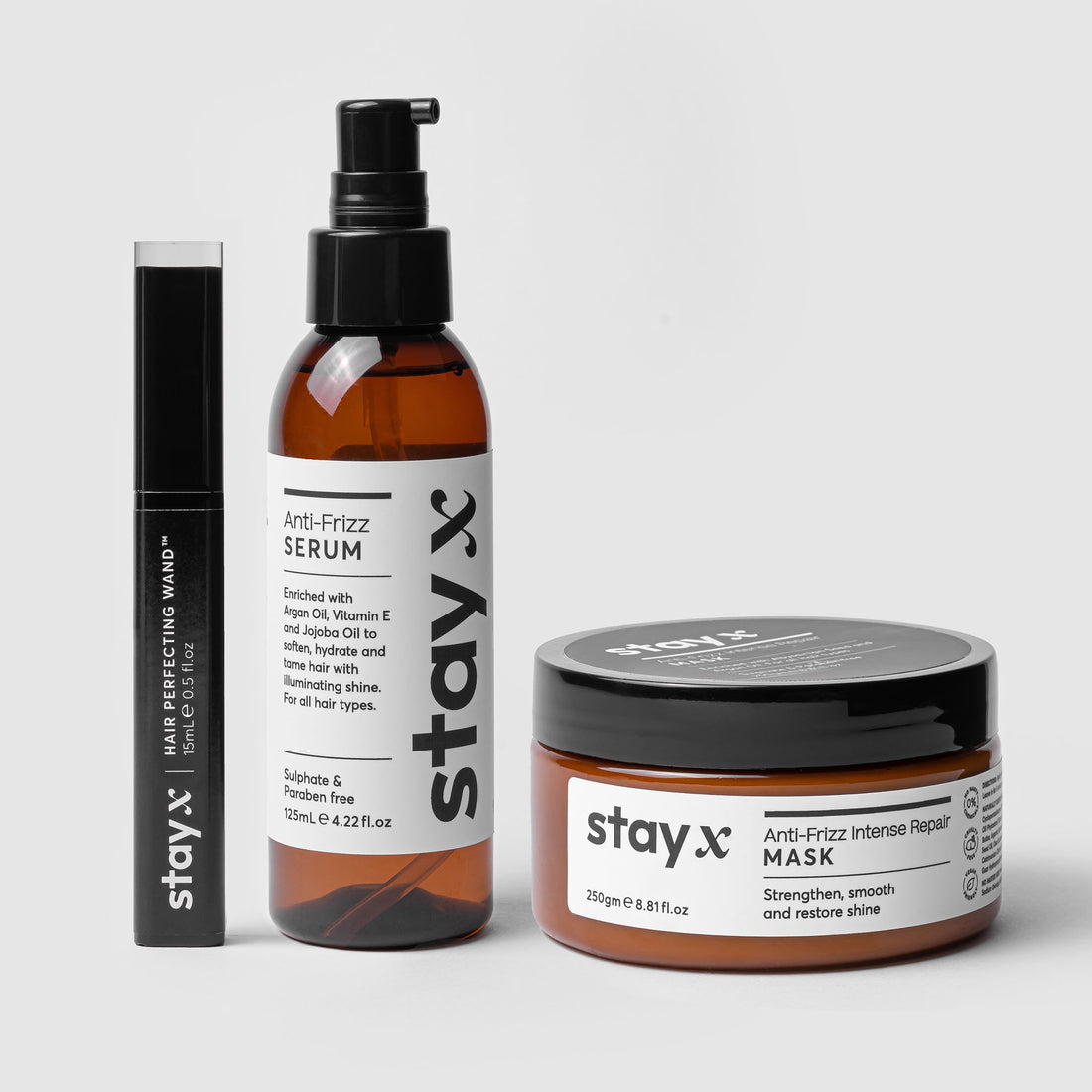As if sleepless nights, leftover baby weight and topsy-turvy hormones weren’t enough, there are even MORE motherhood surprises (yay…). Postpartum hair loss — it’s no Old Wives Tale. Once your hormones settle after having a baby, your hair can start to shed and even fall out in clumps. Fortunately, within the first year, you’ll notice some re-growth but there’s a downside: struggling to tame all those wispy baby hairs. Don’t worry, we get it. Here are some helpful tips to control those flyaways after postpartum hair loss.
1. Ditch the straightener
Yes, a straightener will temporarily flatten flyaways, but it’s not worth it. Here’s why: The more you force your hair into submission through heat styling or chemical treatments, the worse your hair strands will dry up, shrivel and unravel. Yup, it’s true — just like yarn, the strand can split and fray.
When you crack the cuticle (the outermost layer of your locks), it peels off, causing the strand to get thinner. Even if you use a heat protectant spray, you’re still exposing your hair to heat damage. And if you think those baby hairs are pesky now, just wait until you add split ends to the mix.
Broken hairs follow a totally separate flight pattern from healthy hairs (hence the nickname, “flyaways”). These unruly bits float upward, away from our scalp. Knowing this, here’s your first rule when learning how to control postpartum hair loss: ditch the flat iron until the shedding stops!
2. Use a silk pillowcase
Sure, silk pillows sound princessy. But. Get. Over. It. Because in fact, silky pillow cases are actually one of the most low-maintenance ways to control postpartum baby hairs. As celebrity hairstylist Bobby Elliot explains, “The benefit of having a good silk pillowcase is that it creates less friction on the hair and allows the hair a gentle surface”.
With a cotton pillow case, on the other hand, the micro fibers are rougher and can get caught in your baby hairs, which causes friction -- and yes, FYI, that’s how you get “bedhead”. So at the risk of sounding snooty, swap your current pillowcase for a silk one.
3. Slay those strays
For all you hairspray haters, argan oil is normally the solution of choice. Why? Well first off, it’s natural and secondly, it contains lubricating fatty acids that hydrate your strands and fend off frizz. But ahem... there’s just one problem: it’s greasy.
Instead, consider a more lightweight approach to control your postpartum hair loss. For example, a tool like the StayX Hair Perfecting Wand, can tame your tresses in seconds. This air-light formula precisely targets stray hairs, while infusing each strand with smoothing ingredients, so each piece is polished from root to tip.

4. Use a deep conditioner
Opposites attract. That’s why dry hair craves moisture. When your wispy postpartum hairs get frizzy, it’s because the strands are absorbing humidity from the atmosphere, making them puff up and swivel into their own weird, maze-like shapes.
To battle these forces of nature, you need to maintain healthy oil levels along your hair strands. By keeping your baby hairs lubricated, they won’t be so moisture-hungry, and viola, they won’t go all frizzy.
You can protect your new baby hairs by using a deep hydrating conditioner. Using this treatment twice weekly will simmer down your flyaways.
Do you have your own tips on how to control postpartum hair regrowth? Share your experiences in the comment section below!



